Analytics, EU – Baltic States, Latvia, Transport
International Internet Magazine. Baltic States news & analytics
Wednesday, 07.05.2025, 15:58
EU Directorate: Latvia -- the poor and deteriorating quality of road infrastructure
 Print version
Print versionMain current issues in Latvia Issue
1 – Quality of road infrastructure In Latvia, the poor (and deteriorating) quality of road
infrastructure is an important obstacle to safe and efficient transport. It
also leads to congestion in the vicinity of Riga.
Issue 2 – Rail connections with the rest of the EU countries
The development of railway traffic between the Baltic States and the rest of
the EU countries, as well as the efficient functioning of the railway market in
Latvia, is affected by a missing high quality North-South rail link, the
difference in the track gauges (respectively 1520 and 1435 mm) and different
signalling systems. The Rail Baltica project could help remedy these issues.
There is potential for improvement or creation of intermodal terminals and
suitably located, efficient transhipment terminals between the broad-gauge
network and standard-gauge Rail Baltica line.
Issue 3 – Competition in the maritime transport Transparency
and governance of port authorities is problematic and has created obstacles to
competition in the maritime transport market. Port authorities (owned by the
municipalities and governed jointly by municipalities and the central
government) have to perform commercial activities in compliance with the
existing regulatory framework.
Issue 4 - Emissions from road transport Reducing emissions
and final energy consumption in the road sector is a key challenge in Latvia.
Despite having one of the lowest GDP per capital in the EU, Latvia is one of
the countries with the highest emissions from new passenger cars. The shares of
renewable energy in the transport sector and of alternative fuels in the
passenger car fleet are very low.
Key facts and figures on transport in Latvia
Modal split Latvia has a relatively high share of public
transport in its modal split for passenger transport. The largest part of
freight transport in Latvia is done via railways (almost 75%). Inland waterways
do not play any role for freight transport.
Modal split for passenger and freight transport in 2015 :
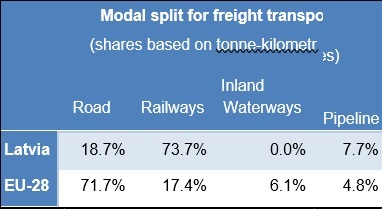
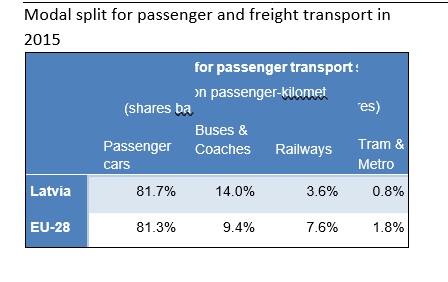
Performance of the logistics sector
According to the analysis of the World Bank, the performance
of the logistics sector in Latvia has remained stable overall in its absolute
score between 2014 and 2016, but its global ranking has deteriorated. In
particular, for the areas of customs and international shipments the results
are weak. Developments seem more positive when it comes to infrastructure.
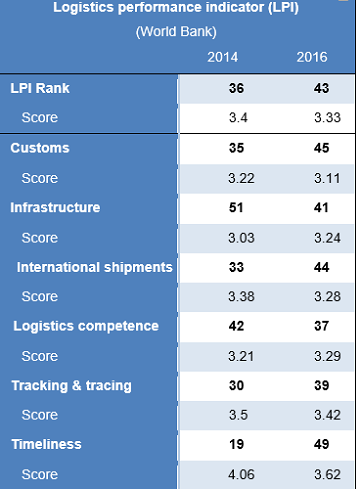
Road safety
Road fatalities in Latvia are among the highest in the EU,
80 dead per million inhabitants versus 50 in the EU on average. However Latvia
reduced road deaths by 28% between 2010 and 2016 (EU average 19%) and
provisional 2017 data show an impressive decrease of 14% (2% at EU level). The
share of pedestrian fatalities is significantly higher (38 %) than the EU
average (21%), whereas the share of motorcyclist fatalities (6%) is lower than
the EU average (14%). The worst trend is among pedestrians, where the fatality
numbers are increasing. Pedestrians are overrepresented in fatalities compared
to their share in other EU countries (35% versus 21%).
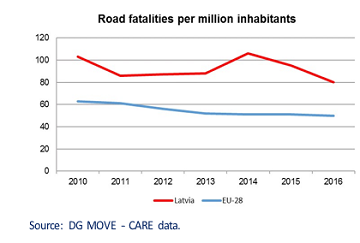
Alternative fuels in road transport
The share of alternative fuelled cars in total sales of new
cars on the Latvian market is very small and numbers seem to be decreasing.
This is particularly noteworthy, as Latvia has particularly high CO2 emissions
from its passenger car fleet.
Market opening in the railway sector In Latvia, the
infrastructure manager is separate from the rail service operators. The
domestic markets for freight and passenger rail transport are open for
competition, but only a few operators are active on the Latvian market. For
many companies, the difference in track gauges represents an obstacle to market
access. Freight traffic is dominated by transit cargo from Russia and Belarus
(as well as from countries further afield) to the three main ports of the
country. Latvia’s high railway-share of tonne-km in freight transport is mainly
due to high transit volumes.
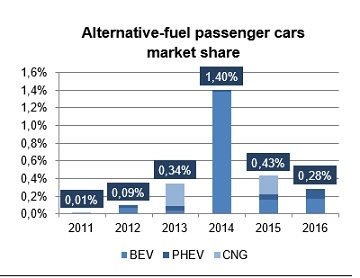
Share of renewable energy in transport
The share of renewables in the Latvian transport sector is
stagnating significantly below the EU average. The main support scheme for the
increased use of renewable energy in transport sector is a blending obligation
of biofuels into liquid transport fuels.
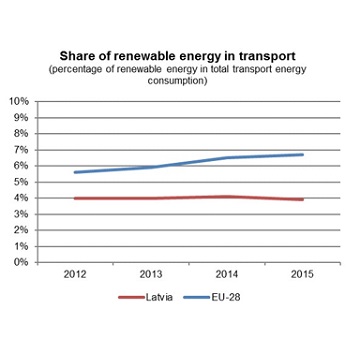
Quality of the transport infrastructure in Latvia
In terms of infrastructure quality, Latvia receives
relatively good ratings from the World Economic Forum for its railway and maritime
infrastructure. However, the road infrastructure is in very poor condition and
the situation has not improved in the last 10 years. Graph Source: World
Economic Forum, The Global Competitiveness Report. The bars represent the rank
of the country compared to the rest of the world, while the lines represent the
quality scores in a scale from 1 to 7.
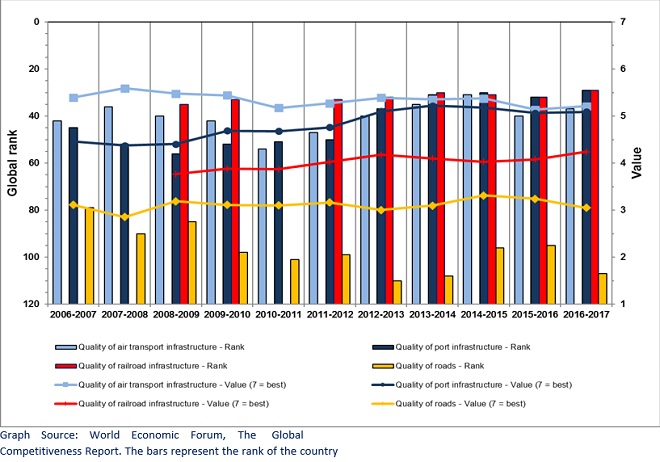

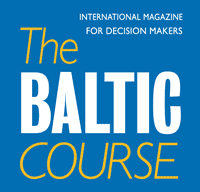


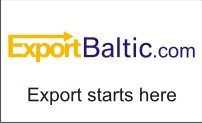



 «The Baltic Course» Is Sold and Stays in Business!
«The Baltic Course» Is Sold and Stays in Business!

